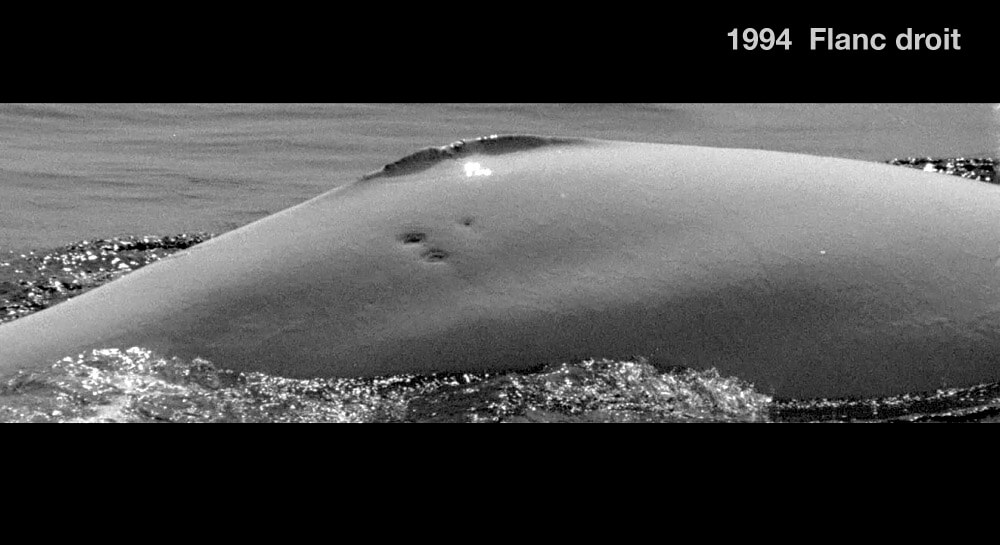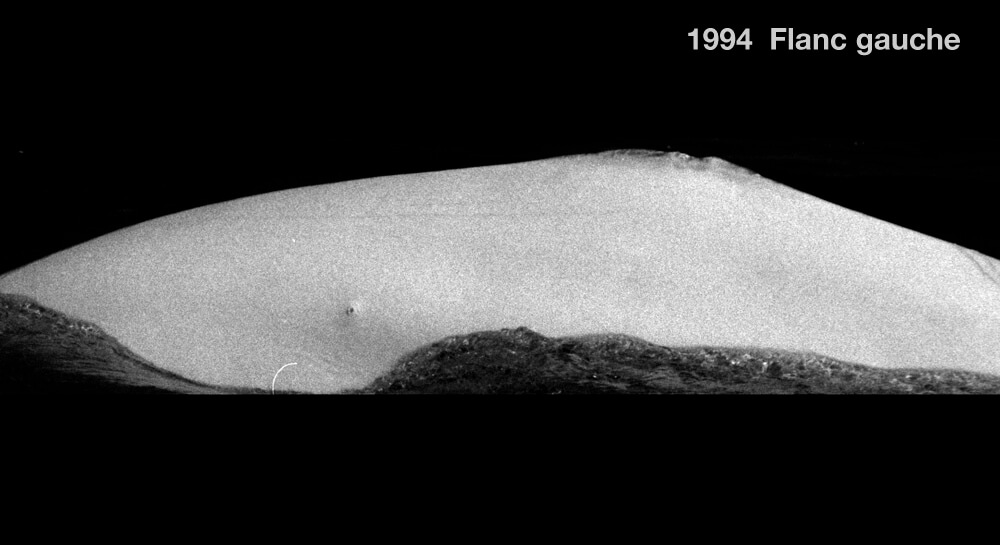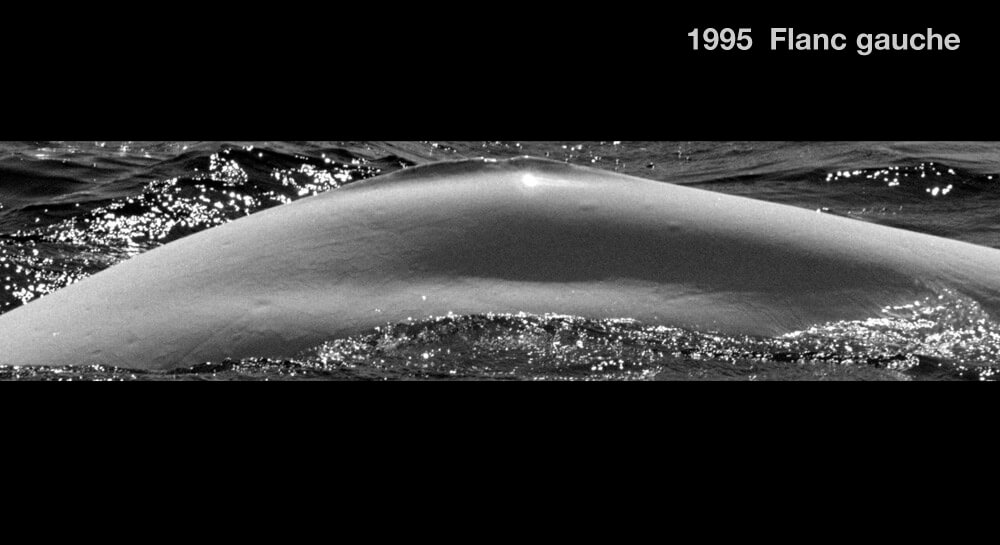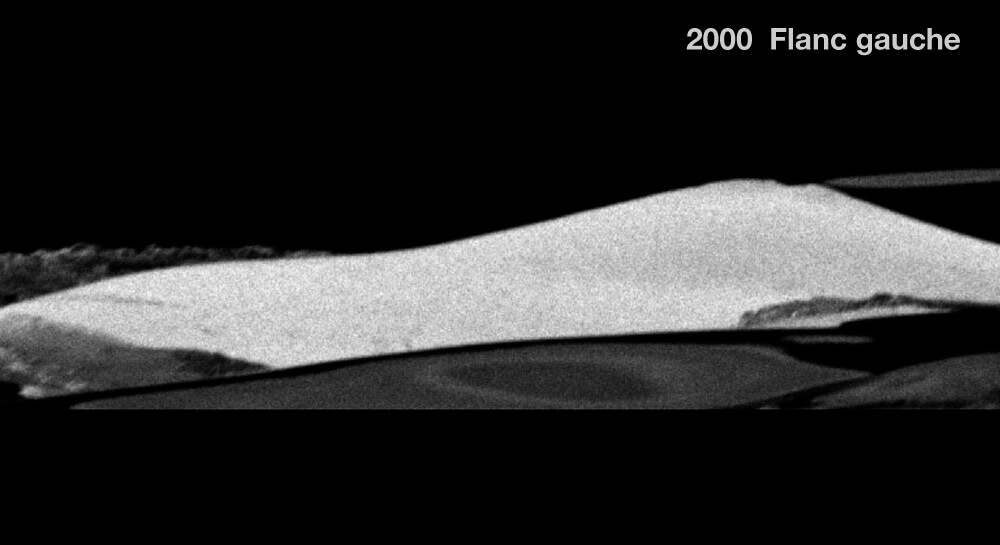GraCy
Beluga

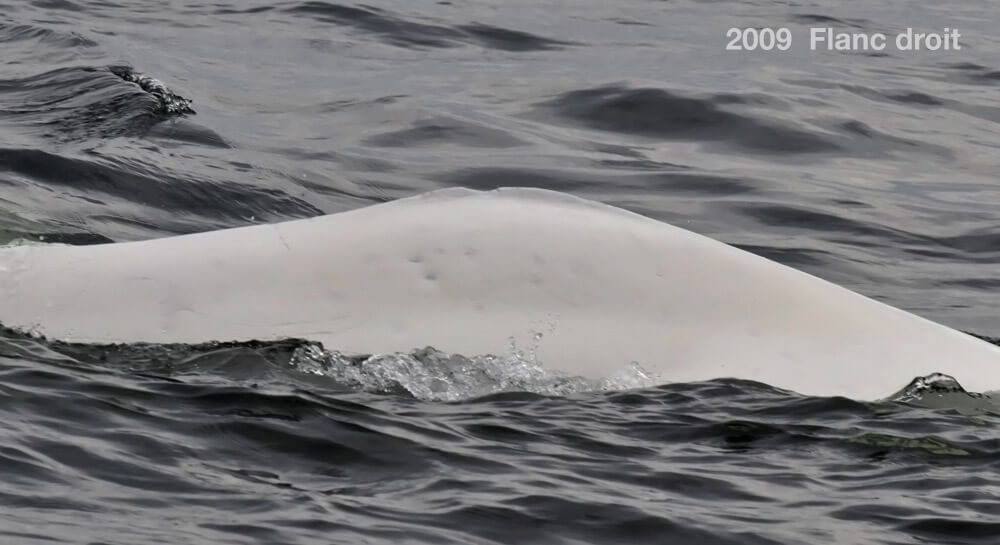
Adopted by Global Reservation Centre
-
ID number
DL0027
-
Sex
Male
-
Year of birth
Before 1973
-
Known Since
1989
Distinctive traits
The deep, wide gash in the middle of GraCy’s dorsal ridge is striking at first glance. On his right flank are three small markings below his crest and a small dot on the left side.
Life history
Known since 1989, he was already all white. GraCy would therefore have been born before 1973.
GraCy’s sex was confirmed by a biopsy, where a piece of skin taken from his back enabled us to carry out a genetic analysis: he is a male. He is part of one of the two male networks in the Saguenay.
We first met GraCy in 1989, when he was already an all-white adult. He’s now over thirty years old. For a long time, belugas were thought to live for around thirty years, when two layers of tooth growth per year were calculated. Today, however, the technique is different: we count one year per growth layer. In this way, belugas could live to be 60 or even 80 years old. Researchers modified the method by tracking a radioactive element in the teeth of Arctic “control” belugas, which had suffered the effects of nuclear testing in the 1950s-1960s.
Observations history in the Estuary
Years in which the animal was not observed Years in which the animal was observed
Latest news
GraCy is spotted in a herd of around 50 adults off Anse à Pierrot in the Saguenay Fjord. Slowly, in single file, the animals head downstream towards the St. Lawrence estuary. GraCy swims in the company of eight belugas, all large males, and among them are DL0204 and Or Blanc. While we’re taking photos, we do a flyover with the drone. The images are breathtaking. These aerial images will be used to estimate the size of the belugas, a new piece of information that we’ll be able to add to their individual files.
Sponsor
Global Reservation Centre adopted GRaCy (2003).

